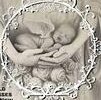When someone dies, the clothing they’re dressed in is often a big part of their funeral and memorial services. Some people choose to dress their loved ones in clothes that were special to them while they were alive – think pajamas and slippers, a nightgown, or a negligee. Others choose to dress their loved ones in a special outfit that captures their personality, style, or preference. Many families also consider their religious beliefs, which may have some specific requirements regarding attire for a deceased person’s final resting place.
For example, some religions require that the body of a deceased woman be draped with a white gown after death. Others require that the body of a Muslim person be wrapped in a white shroud. These religious guidelines can influence the clothing that you’ll want to have ready for your loved one’s funeral service, which is why it’s important to know these rules ahead of time.
Regardless of the religion or burial grounds you choose for your loved one, you’ll want to choose a burial garment that’s biodegradable and made of natural materials. Clothes for green and natural burials must be made from untreated, organic fabrics such as cotton or wool, and they can’t contain synthetic materials like elastic waistbands, nylon threads, plastic linings, or metal buttons. There are a number of companies that specialize in creating clothes that are suitable for green and natural burials, and they’ll work with you to ensure your outfit meets the requirements of your chosen cemetery or funeral home.
A lot of people will want to dress their loved ones in their favorite outfits, but this can be difficult for older people whose clothes may no longer fit due to weight loss or rigor mortis. For this reason, it’s common to use burial gowns that are designed specifically for the body – they look like dressing gowns or robes and have easily adjustable fabric.
For infants, some charities and companies offer handmade funeral garments that are crocheted or knitted in a variety of sizes to accommodate tiny babies. These are usually shaped like Baptismal or Christening dresses and come in both boys’ and girls’ styles. Many of these outfits are adorned with embroidery or lace, and they’re available for newborns as well as micro-premature infants who died before reaching full gestational age.
Some families choose to include shoes with their loved ones’ burial outfits – but not everyone does this, especially when it comes to viewing or open casket funerals. Putting shoes on a deceased person can be tricky because of rigor mortis, so if you want your loved ones to have their feet showing, you’ll need to prepare a pair for them ahead of time.
Many people want to have their loved ones’ hands free when they’re buried, so having them wear socks is more than fine for most situations. It’s also fine to leave the feet bare, and some people prefer this for their loved ones who are being cremated.
